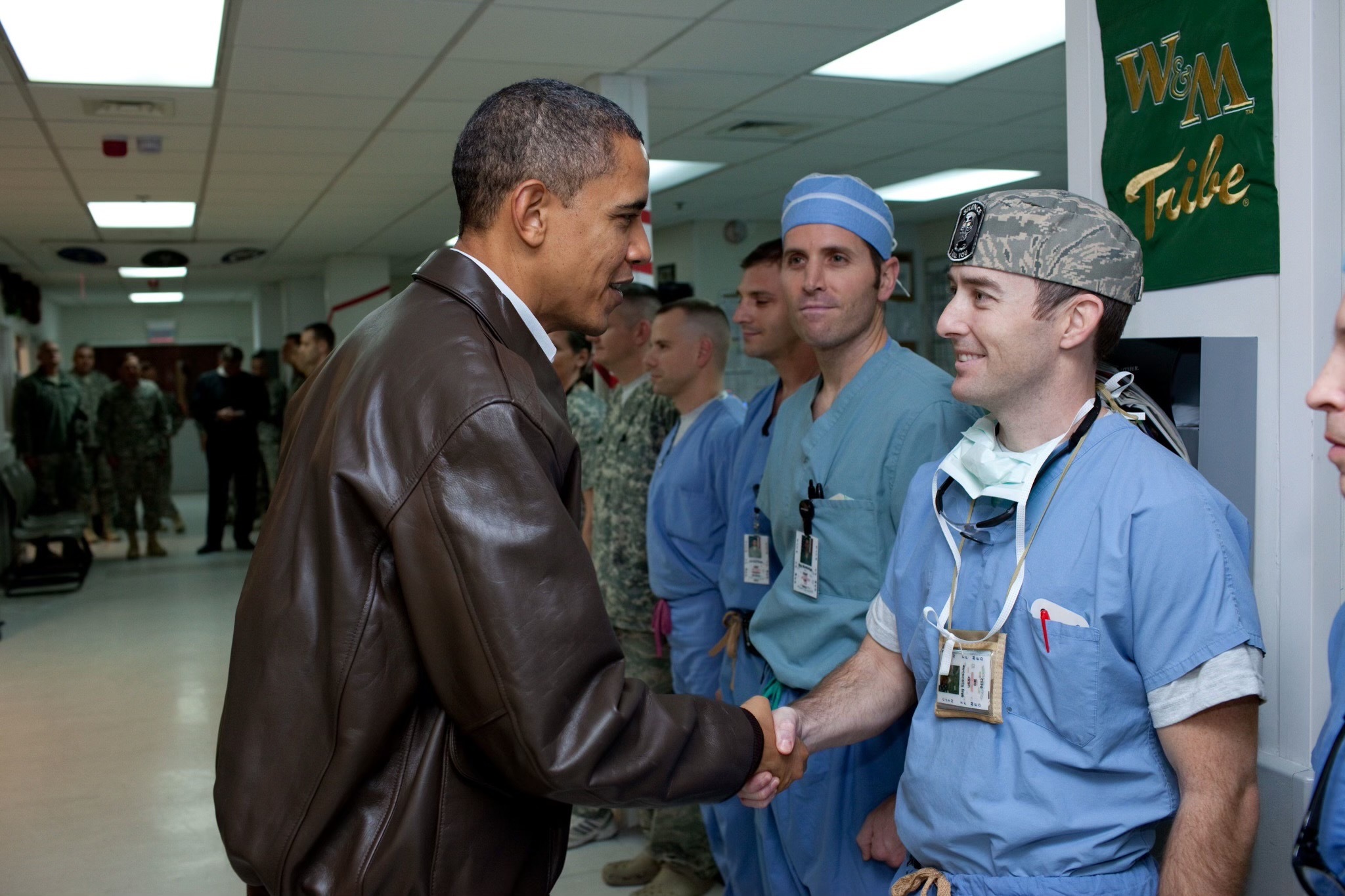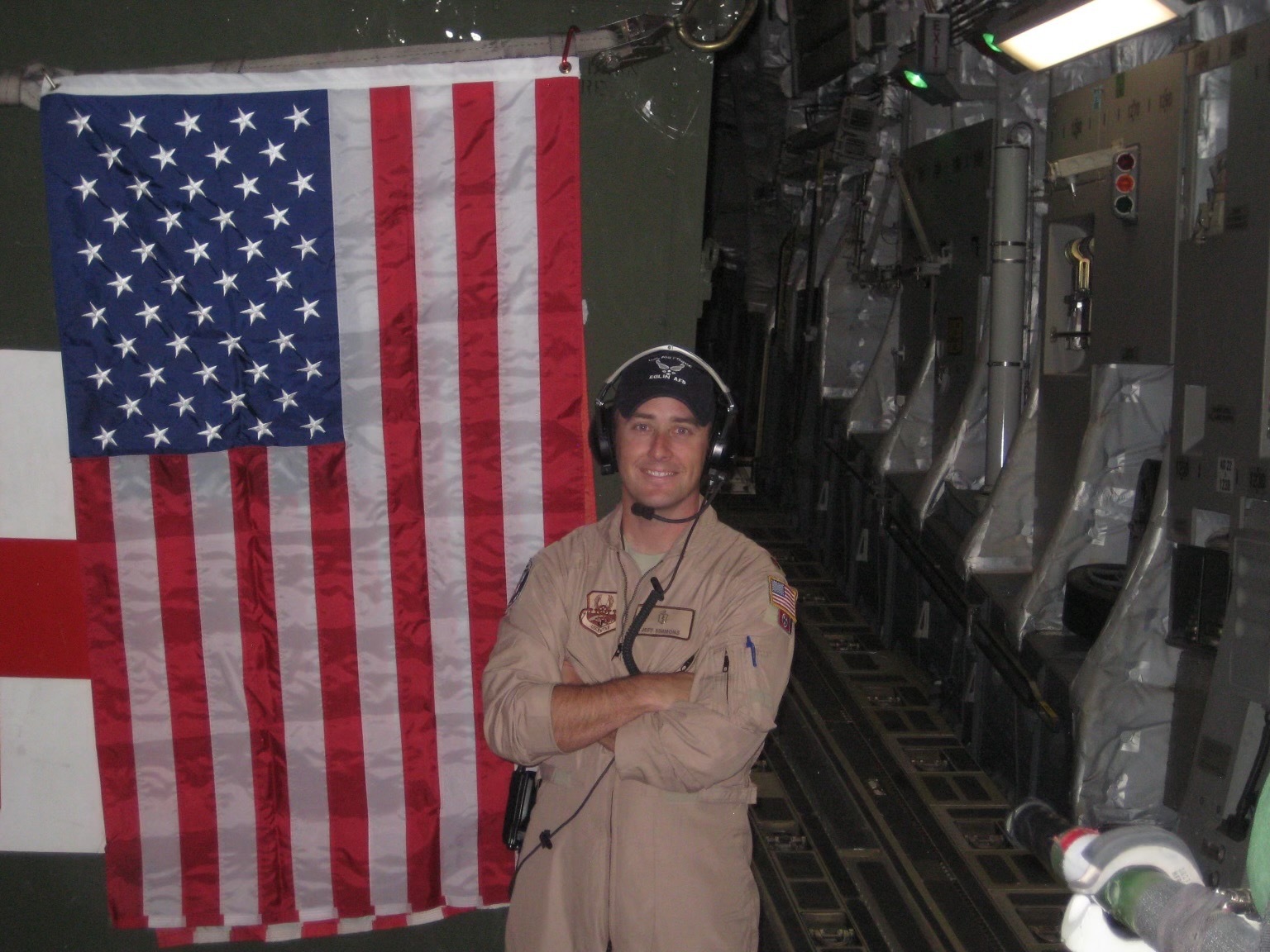
Jeff Simmons, M.D., MSHQS, FASA, shares how his time in the Air Force transformed him into the health care leader he is today.
Life in the military
Jeff Simmons, M.D., MSHQS, FASA, professor and anesthesiologist in the UAB Heersink School of Medicine Department of Anesthesiology and Perioperative Medicine, grew up with the military at the forefront of his life. His father served in the Army for 20 years as a helicopter pilot during the Vietnam era, and Simmons spent his entire childhood on and around military bases.
Upon graduating high school and looking toward the future, he knew that the military would grant him a way to receive a valuable education for an affordable price. Simmons received a Reserve Officers’ Training Corps (ROTC) scholarship through Samford University in Birmingham, Ala. After four years at Samford, he attained a bachelor’s degree, and then moved to Washington D.C. to work as a personnel officer helping colonels and generals retire from the armed forces.
Beginning a medical career
After working in Washington D.C. for a few years, Simmons realized his desire to attend medical school. He applied to the Heersink School of Medicine and was granted a scholarship through the Air Force Health Professions Scholarship Program. After medical school, Simmons completed his anesthesia residency at the University of Tennessee, Knoxville.
Upon completion of his residency, Simmons knew he had to repay his time to the Air Force which took him to Eglin Air Force Base in western Florida. During his eight years there, he completed multiple deployments to Iraq, Germany, and Afghanistan. Simmons flew with the Critical Care Air Transport Team (CCATT) helping transport injured soldiers to medical facilities in Germany and the United States.
“These would be significantly wounded soldiers that were still on a ventilator and in need of critical care,” Simmons says. “Think about our ICUs [at UAB], but in the back of a plane.”
In addition to flying with CCATT, Simmons worked in the hospital while in Afghanistan, where the coordination and efficiency of his missions taught him the criticality of well-organized patient care.
“We had a very coordinated effort of moving soldiers from the point of injury,” Simmons shares. “Normally, they could get injured in Afghanistan, and we would have them in the United States, having had several surgeries, within 48-72 hours.”

Teaching the next generation of health care leaders
In 2011, Simmons seized an opportunity to teach for the CCATT located at the University of Cincinnati. He joined the Center for Sustainment of Trauma and Resuscitation Skills (C-STARS) program as a cadre, and, during his tenure, was redeployed to Germany and Afghanistan.
“We used high-fidelity simulation to train these teams. We had enormous rooms that looked just like the back of a plane, and we would use very lifelike mannikins,” Simmons says. “Then we would train the teams inside the setting of a plane with the jet engine noise and the headsets on. They would be in there fully immersed, and we would be in another room watching on a screen, making things happen, so we could train them on how to handle emergencies in the air.”
Simmons’s time in the Air Force also gave him valuable insight into producing better outcomes for patients.
“Establishing a set of parameters or guidelines would direct you to the best way to handle a problem,” he says. “Because of the protocolization the Air Force has, they produce very good outcomes with little variance in how all the doctors across the system treat the same kind of injury.”
In 2014, Simmons decided to leave the Air Force. Due to his experience with simulation teaching and a well-rounded skill set, he was recruited to UAB by former department chair Tony Jones, M.D. His first mission at UAB was to help develop the clinical simulation program as well as the Maintenance of Certification in Anesthesia (MOCA) simulation course.
“The Air Force was very instruction oriented,” Simmons says. “I wanted to bring that to UAB. I felt like if we could provide guidelines for people, they could understand what the best way was to treat a patient. Then, there would be little variance, and we would have better outcomes. “
Clinical simulation offers high-fidelity, immersive simulations tailored for individual participants in a controlled clinical setting. Anesthesiologists practice crisis resource management techniques followed by feedback with simulation-trained experts. The setting is professional, yet relaxed, where there are opportunities for mistakes and learning in a safe, low-risk environment.
“I love teaching through simulation because it is a way people can practice before working on real people,” Simmons adds. “They have a chance to fail and learn from their mistakes.”

Leading the charge
Simmons spent years researching and writing guidelines for a variety of clinical processes regarding the perioperative care of patients. During his time at UAB, he has helped to create a centralized resource webpage for Preoperative Assessment, Consultation, and Treatment (PACT) Clinic to optimize surgical readiness to promote the best outcomes. He has also had a hand in developing the enhanced recovery program which helps reduce surgical pain in patients while reducing possible complications as well as their length of stay in the hospital.
“Dr. Simmons has been a remarkable asset to creating a streamlined, efficient, and positive experience for patient care at UAB,” says Alfred Habeeb Professor and Chair Dan E. Berkowitz, M.D. “His leadership of the PACT Clinic into a unique space in which pre-operative assessment and pre-habilitation can be seamlessly implemented has been transformative for the whole perioperative enterprise.”
These opportunities led Simmons to getting a master’s degree, attending the leadership institute at UAB, and becoming the health system vice president for community practice.
“The Air Force was very big on mentorship,” he shares. “I was able to leverage the military leadership into the ability to lead here at UAB, and then hopefully to mentor others.
Simmons currently mentors junior faculty member Beomjy Ohlman, M.D., associate director of the PACT Clinic.
“I think one of the greatest things the military taught me was leadership, getting projects done in a timely manner, and getting things done that you said you were going to do,” Simmons says. “When I got to UAB, I was told that I needed to create a simulation program, so I created a simulation program. They wanted enhanced recovery program, so Daniel Chu, M.D., and I created an enhanced recovery program. They wanted to get the preoperative clinic into a new, heightened model of optimization, so I did that.”

Simmons has been a fervent leader in Department of Anesthesiology and Perioperative Medicine for a decade now, and the impact he has made on the department and patients at UAB Medicine is astounding.
“Dr. Simmons has been a crucial part of ensuring our residents, fellows, and faculty have a standardized resource to refer to for best practices in clinical settings,” Berkowitz adds. Moreover, his can-do attitude to perioperative challenges has made him such an important asset to our operation. I am grateful for his unwavering commitment to this department, our patients, and this institution. Throughout his time here, he has exemplified what it means to be a compassionate and accomplished health care leader.”